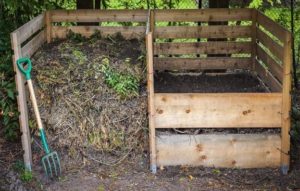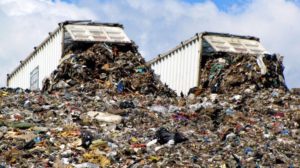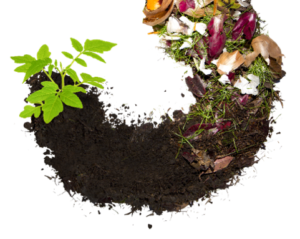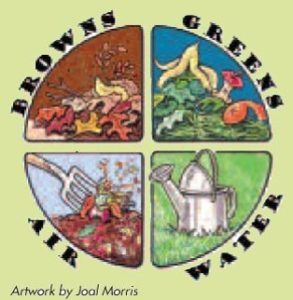It’s time for spring clean-up! All that pruning and raking will undoubtedly produce some big piles of yard scraps.  Consider creating for yourself a compost pile. Read on to see a few reasons why and to get some info on how to get started.
Consider creating for yourself a compost pile. Read on to see a few reasons why and to get some info on how to get started.
According to The Center for Sustainability at Duke University, the average American generates 4.3 pounds of waste per day. So, if you and I are average, we will each produce m ore than 1500 pounds of garbage by the end of this year.
ore than 1500 pounds of garbage by the end of this year.
There is an alternative for much of the garbage waste that is currently sent to landfills. That alternative is composting. In this article, I’ll define what compost is, explain the potential correlations between composting and our environment, and introduce the basic elements of how to compost. Let’s start by exploring the concept of composting.
Compost is decomposed organic material. According to the Illinois State Extension, (https://extension.illinois.edu/compost/process.cfm) compost is made with material such as leaves, shredded twigs, and kitchen scraps from plants.
Compost becomes a soil amendment with fertilizer value. Jerry Goodspeed at the Utah State Extension tells us that the end result of composting is a dark, crumbly, earthy-smelling material that contains nutrients needed for new plant growth. (http://digitalcommons.usu.edu/extension_curall/492/, n.d.)
Now that we have established what compost is, let’s take a look at its implications on our environment. F irst, soil is improved when compost is added to it. According to the EPA (https://www.epa.gov/recycle/composting-home, n.d.) composting:
irst, soil is improved when compost is added to it. According to the EPA (https://www.epa.gov/recycle/composting-home, n.d.) composting:
- Enriches soil, helping retain moisture and suppress diseases and pests.
- Reduces the need for chemical fertilizers.
- Encourages the production of beneficial bacteria and fungi.
Composting also reduces methane gas emissions. Plant materials in landfills emit greater amounts of methane gas into the atmosphere as they decompose. According to Fred Michel (Michel, Summer 2010, Vol. 18 Issue 3) “compost productions is a valued way to reduce methane emissions from landfills and manure storage…”
Now that we understand the possible implications of composting, let’s talk about how to compost! A compost pile can be established in a back yard in open air or in a closed container for a faster process. Following is a composting recipe:
Balance your pile by adding “browns” (to add carbon) and “greens” (to add nitrogen) in order to create the chemical reaction necessary for the composting process.
Brown materials include : Leaves, Twigs, Shredded newspaper, Cardboard rolls, Clean paper, and Fireplace ashes.
: Leaves, Twigs, Shredded newspaper, Cardboard rolls, Clean paper, and Fireplace ashes.
Green materials include: Fruit and Vegetable scraps, Grass clippings, Bread and grains, Coffee grounds and used tea bags, Hair and fur, and Manure from animals that are herbivores such as cows, horses, sheep and goats.
Do not use: Dairy, meats, bones, fats, oils, pet waste from dogs or cats, seafood scraps, plastics, stickers from fruit and vegetables, metals, glass, treated or painted wood.
Here at Lomond View Nursery, we also sell granular nitrogen. Adding this to your pile will speed up and aid the composting process of your pile.
Add water to dampen and speed up the decomposing work of the bacteria. Turn once a month to reintroduce oxygen to the center of the pile. (http://northparknursery.com/2015/08/how-to-composting-basics/, n.d.) Depending on the temperature outside and amount of heat producing nitrogen included, your pile will be composted and ready for use in approximately 3-6 months.
So now that you know a little more about what compost is and how to make it, take all those piles from your spring clean-up and make compost pile instead of sending it to the land fill!
Works Cited
http://digitalcommons.usu.edu/extension_curall/492/. (n.d.).
http://northparknursery.com/2015/08/how-to-composting-basics/. (n.d.).
http://www.weber.edu/WSUImages/environment/Newsletters/Oct2012Newsletter.pdf. (n.d.).
https://extension.illinois.edu/compost/process.cfm. (n.d.).
https://www.epa.gov/recycle/composting-home. (n.d.).
https://www.epa.gov/recycle/composting-home. (n.d.).
Michel, F. (Summer 2010, Vol. 18 Issue 3). Compost: Benefits vs. Risks. Compost Science & Utilization, 137-137.


